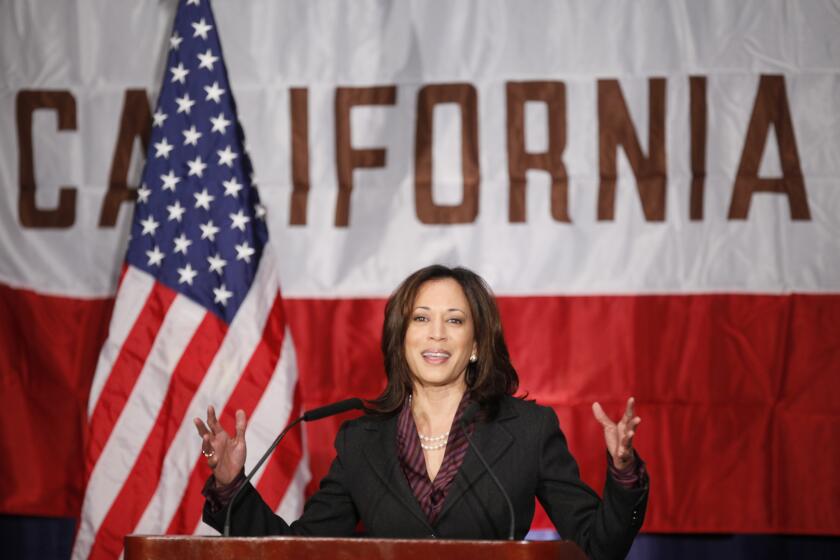Stanley Hiller Jr., 81; Pioneer in Helicopter Design, Rescuer of Troubled Corporations
The surest sign that Stanley Hiller Jr. was just a kid when he designed the first helicopter to fly successfully in the Western United States was the field on which he chose to test it in 1944: the football stadium of UC Berkeley.
A novice helicopter pilot, he learned to fly the bright-yellow contraption dubbed the Hiller-copter while it was anchored to several cars. He wore what might pass for safety gear among 19-year-olds: a T-shirt and slacks.
On Aug. 31, 1944 -- the day before he was to be drafted -- Hiller unveiled the prototype in San Francisco for the military. The Navy saw it as a potential rescue vehicle, and he received an immediate deferral from the draft to develop the design.
The helicopter was considered revolutionary because it was kept aloft by two sets of rotors that moved in opposite directions, negating the need for a tail rudder. The craft led to the founding of Palo Alto-based Hiller Aircraft Co., which became a major helicopter manufacturer.
Hiller, who had a second career beginning in the 1960s as a corporate turnaround specialist, died of complications associated with Alzheimer’s disease April 20 at his home in Atherton, Calif., his family said. He was 81.
Hiller’s mother became acutely aware of his penchant for inventing when he swiped the engine from the family washing machine to power a homemade go-cart around his Berkeley neighborhood. He was 8.
By 10, he had learned to fly in a plane for which his father held the patent.
At 12, Hiller had invented a die-casting machine with his father that led him to develop gas-propelled mini-race cars, which turned into a business that made him $100,000 a year by the time he was 17. The government hired the teenager to produce aluminum parts for fighter planes.
As a 16-year-old freshman at UC Berkeley, Hiller shared his novel helicopter design with a professor who said it would never fly. Within a year, Hiller had dropped out and was soon refining the Hiller-copter, also known as the XH-44, which is in the collection at the Smithsonian Institution’s National Air and Space Museum.
When a reporter asked Hiller, then 23, how he had achieved so much so quickly, he replied, “I was fortunate in my choice of a father.”
Stanley Hiller Sr., who owned a large shipping company, was a professional airplane pilot, engineer and, like his father before him, an inventor. The senior Hiller had built and flown his own airplane by the time he was 20 in 1910 and held 40 patents.
Imaginative ideas spilled out of Hiller Aircraft, including many for futuristic machines that were never mass-produced.
Among them were a single-passenger flying platform that hovered without wings or visible helicopter blades, a collapsible helicopter called a rotorcycle meant to be dropped behind enemy lines and reassembled in minutes, and the Hiller Hornet, powered by jet engines mounted on the ends of rotor blades that the company planned to sell for less than $5,000 apiece.
About 3,000 more-practical aircraft were churned out, including battlefield evacuation helicopters that became familiar to soldiers during the Korean War. Hiller called them “jeeps of the air.”
“As a kid growing up, I looked up at my dad and said, ‘What is there left to invent when you are done?’ ” said Steve Hiller, one of his two sons.
When Hiller Aircraft was acquired for about $10 million by Fairchild Stratos in 1964, Hiller remained as an executive vice president but soon lost a bitter bidding war to provide the Pentagon with helicopters for use in the Vietnam War. After Hughes Aircraft got the job and the firm’s other military contracts, Hiller quit in disgust.
He reinvented himself as a “corporate paramedic,” a term he liked to use to describe his nonhostile takeovers and rescues of dying companies.
Among the 30 firms he said he salvaged over three decades were Reed Tool, a maker of oil-drill bits; Bekins movers; and York International, an air-conditioner manufacturer.
After a career that included such fanciful proposals as flying submarines and bridges, didn’t Hiller find saving companies a little boring?
“It was a romantic time indeed,” Hiller told Forbes magazine in 1988. “But repairing these old companies ... this is war too.”
But Hiller insisted that it was a noncombat sport, and he was often portrayed in business stories as a corporate leader who knew how to put together a team and make employees feel invested in a company.
After retiring, he returned to aviation by establishing a museum in 1998 dedicated to education. The Hiller Aviation Institute and Museum displays about 40 aircraft in San Carlos, Calif., about five miles from Hiller’s home.
“The museum was his way of giving back to the community that nurtured him,” said Willie Turner, a museum spokesman who considered Hiller “a gentleman’s gentleman.”
A fifth-generation Californian, Hiller was born Nov. 15, 1924, in San Francisco and raised his family in Atherton.
In addition to his son, Steve, he is survived by another son, Jeff, seven granddaughters and his wife, the former Carolyn Balsdon, whom he married in 1946 after meeting her at UC Berkeley.
On the day he first flew the Hiller-copter untethered, she was the one hiding behind a row of stadium seats.
More to Read
Inside the business of entertainment
The Wide Shot brings you news, analysis and insights on everything from streaming wars to production — and what it all means for the future.
You may occasionally receive promotional content from the Los Angeles Times.










